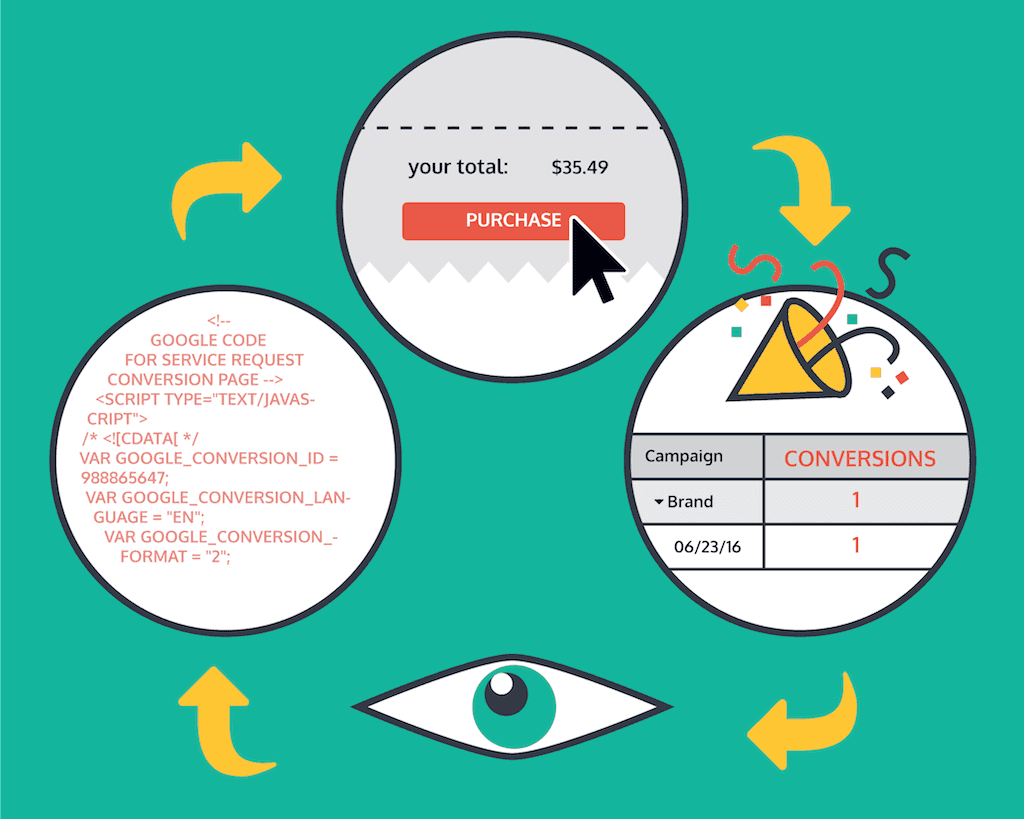Escape the Attribution Dark Ages: Your Google Conversion Attribution FAQ

If you’ve noticed discrepancies in conversion metrics between Google Analytics and Google AdWords, you’re not alone.
Whenever Google explained this inconsistency, they typically blamed it on attribution. It got to the point where attribution started to feel like a fake term that was used to cover up errors—and Google took notice.
Recently, Google has pushed to add transparency to attribution. This culminated in their announcement at 2017’s Google Marketing Next event. Learn more about the new Google Attribution and Attribution 360.
Sophisticated conversion attribution is the future. Get your business out of the attribution dark ages by reading our attribution FAQ.
What does attribution even mean?
To put it simply, “attribution” is how Google assigns a conversion to different interactions with your advertising efforts.
From search ads to display ads to organic listings, there are many possible touchpoints with your brand. Google chooses how to attribute a conversion to a touchpoint.
For example, when someone clicks on a display ad and calls the number on the website, that conversion gets attributed to the display ad.
Why should we change the old attribution model?
The old attribution model doesn’t give enough weight to the value of your display ads and non-branded searches.
Let’s say I’m looking for top digital marketing agencies. I could first search for “top marketing agencies” on my smartphone and click on an ad.
Later, I could be reading about the latest PPC trends on a tablet. I might see a display banner from that very marketing agency. Finally, I get on my computer and search that agency’s name (cough, Perfect Search Media, cough), click on their ad, and fill out a contact form.
In the old days, 100% of that conversion would be attributed to the final branded ad click. However, you can tell that each touchpoint played a part in earning that final conversion.
Just because an ad doesn’t drive the final conversion or purchase doesn’t mean they aren’t an important part of your marketing strategy. A new attribution model can give those campaigns full credit for their hard work.
What is the most common attribution model?
Like all aspects of your ad strategy, your attribution model should be tested.
Google allows you to look at reports with multiple attribution models, so you can easily see how they differ.
The default attribution model is “last click.” Remember that example where my click on a branded search ad gave that ad 100% of the conversion attribution? This is a classic example of last click attribution. Even though it’s the default, it’s probably not the best choice.
If you qualify, Google recommends using the “data-driven” attribution model. This model applies Google’s machine learning capabilities to assign weights to different touchpoints.
Since not all businesses qualify for the data-driven model, we recommend testing the “linear” attribution model. This model divides the conversion value evenly across every touchpoint.
How do you know that you aren’t counting conversions multiple times?
Don’t stress. If your conversion tracking is in tip-top shape, the total conversions tracked through your website should be accurate.
If you’re using the last click model, each interaction gets 100% of the conversion, so this counts as one conversion. If you’re using the linear model, each interaction gets a portion of the conversion—but it always adds up to just one conversion.
How can my business implement better attribution models?
Right now, there are settings within the AdWords conversion tab and the Google Analytics Attribution tab that allow you to adjust the tracking. Don’t be afraid to play around in the platforms and try something other than last click attribution.
Google will be rolling out a new platform called Google Attribution. This new platform can integrate with your AdWords, Google Analytics, and DoubleClick platforms and streamlines attribution management in one place.
If your business works with a Premier Google Partner (we’re one of them!), your business can get access to betas like Google Attribution early. This can help you optimize your attribution model and better understand your conversion funnel.
—
Attribution shouldn’t be a mystery. Contact us if you’re still looking for some smart A’s to your attribution Q’s.
Check out 7 AdWords tips to help your business save money and improve performance.

Anthony Lower is an Indiana University alum who really wishes Chewbacca was in his posse. If he were stranded on a desert island, Anthony would hope he had his golf clubs, bicycle, and a radio – why not turn his time there into a vacation?
